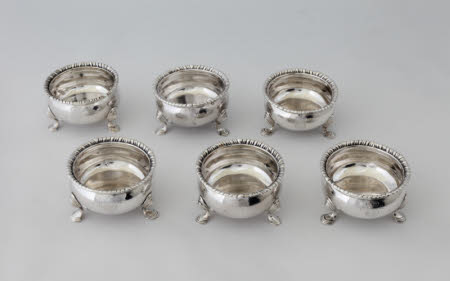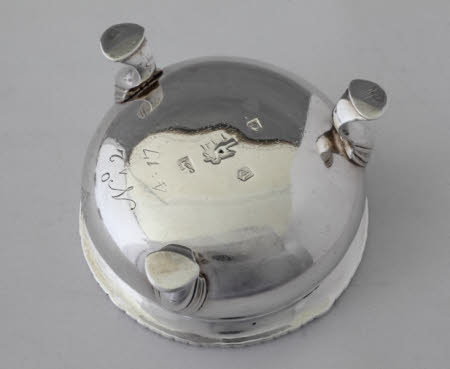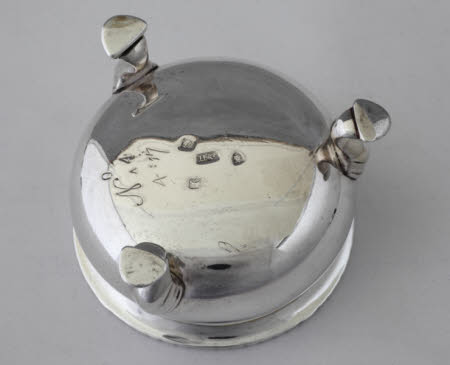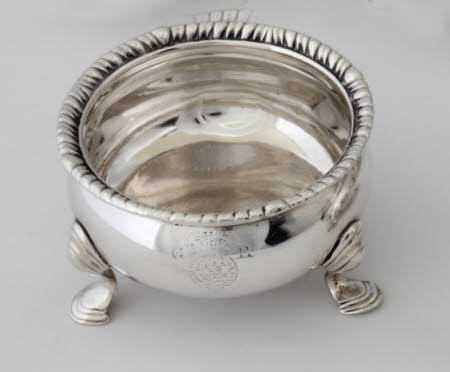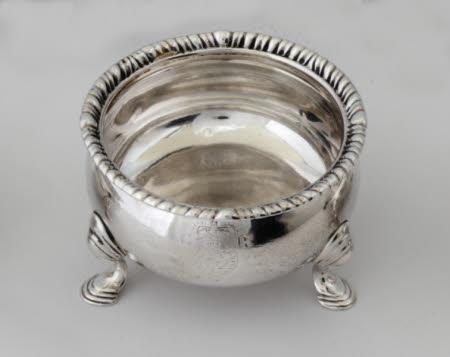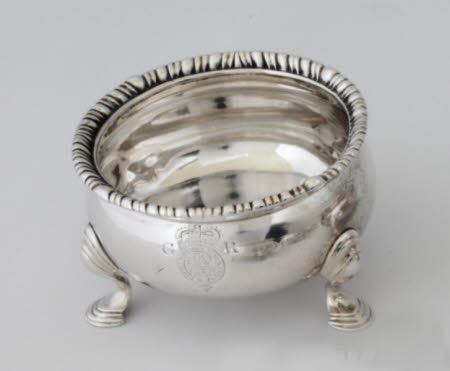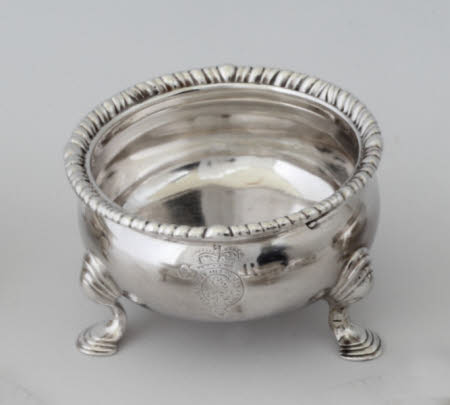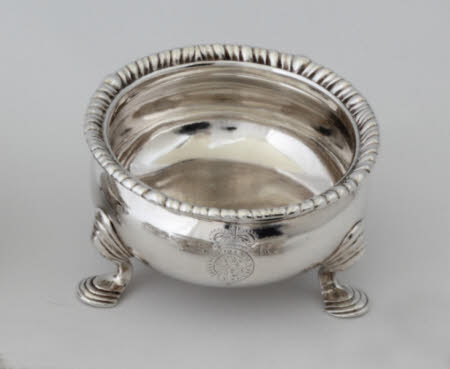Six salts
Lewis Hamon and David Hennell
Category
Silver
Date
1736 - 1759
Materials
Sterling silver
Measurements
4.4 cm (Height); 7.9 cm (Diameter)
Place of origin
London
Order this imageCollection
Ickworth, Suffolk
NT 852073
Summary
Six salts, sterling silver, London, two by Lewis Hamon, 1736/7 and four by David Hennell I, 1758/9. The circular-bellied body of each salt is raised and has a cast gadroon rim and three cast concertina pad and scroll feet. Heraldry: The front of each salt is engraved with the quartered arms of the Hanoverian monarchs (pre-1801) within the Garter and beneath an imperial crown flanked by the initials G R. Scratchweights: ‘No۸ 1 [/] 4=14½’; ‘No۸ 2 [/] 4=17’; ‘No۸ 3 [/] 4=14 ½’; ‘No۸ 4 [/] 4=17’; ‘No۸ 5 [/] 4=16’ ; ‘No 6 [/] 4=12’
Full description
This form of salt, sometimes called ‘cauldron’, appeared in the mid 1720s [1] but is uncommon before the date of the pair by Lewis Hamon at Ickworth. Little of Hamon’s work survives and these are amongst the even rarer pieces by him bearing a full set of hallmarks.[2] They had presumably been turned in to David Hennell I who is much better known for salts than Hamon and had produced the same model himself since at least 1737. Their extreme simplicity and diminutive size make it unlikely that they would have been on the table at the same time as the magnificent and extensive set of salts by Kandler (NT 852086) and, like the ambassadorial soup ladles (NT 852099.51-2), they were probably part of Lord Bristol’s everyday service. The salts would have been provided with glass liners which were sometimes blown directly into them and often had a star cut into the base. Surviving examples are extremely rare but one from a salt of this model is illustrated by Percy Hennell in The Hennell Salt Cellars.[3] James Rothwell, Decorative Arts Curator May 2021 [Adapted from James Rothwell, Silver for Entertaining: The Ickworth Collection, London 2017, cat. 67, p. 151] Notes: [1] G. Bernard Hughes, Small Antique Silverware, New York 1957, p. 95. [2] Information from Peter Cameron. [3] Percy Hennell, The Hennell Salt Cellars 1736 to 1876, 1986, p. 30, fig. 4. Exhibited: Society of the Four Arts, Palm Beach, Florida, 1959 (Hamon pair).
Provenance
Jewel Office; allocated to George Hervey, 2nd Earl of Bristol (1721-75) as Ambassador to Madrid 1758; discharged to Lord Bristol 9 April 1759; by descent to the 4th Marquess of Bristol (1863-1951); accepted by the Treasury in lieu of death duties in 1956 and transferred to the National Trust.
Credit line
Ickworth, the Bristol Collection (National Trust)
Makers and roles
Lewis Hamon and David Hennell, goldsmith
